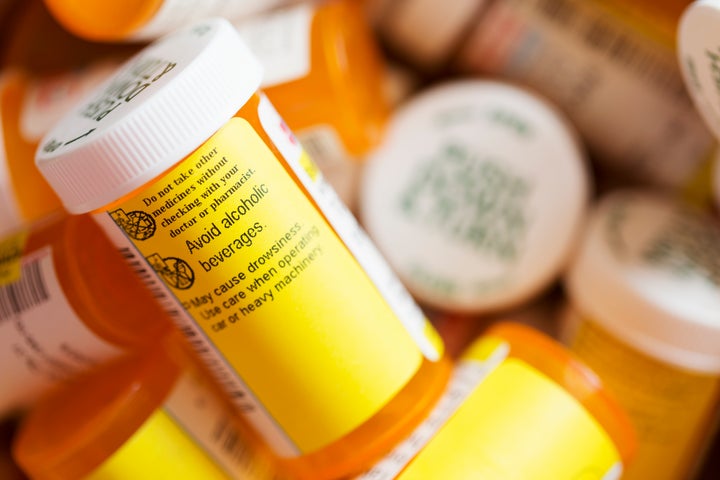
Monday, in an Oklahoma court, a judge ordered Johnson & Johnson to pay the state $572 million for the manufacturer’s role in the opioid crisis. Oklahoma is one of dozens of states currently suing drug manufacturers and distributors for their role in misrepresenting and downplaying the risks of addictive drugs.
On the surface, this seems like a step in the right direction ― and it is. Monday’s landmark ruling means people are finally grappling with the severity of the crisis and recognizing that accountability goes beyond those struggling with opioid addiction. But it’s not that simple.
When news of the ruling broke, I received several text messages from friends. They wanted to know if I’d read the news, wanted to know what I thought.
I was an opioid addict before the opioid crisis was in full swing. I struggled with heroin addiction for 15 years, beginning at age 13. I didn’t “look like a drug addict.” I went to a prep school, I got straight A’s. Later, I held jobs and had relationships. I hid my addiction for more than a decade from nearly everyone in my life — family, friends, boyfriends.
When I went to rehab the first time, at age 23 in 1997, I was an anomaly. I was the youngest person by 10 years, one of only three women, and the only heroin addict. If you walked into a rehab facility today, the demographics would be very different.
I wouldn’t be an anomaly if I were using today. I might also be dead.
Would the opioid crisis look like it does today if companies like Johnson & Johnson didn’t make opioid production a priority, didn’t oversell opioids, didn’t lie to consumers about their safety? No. As Oklahoma Judge Thad Balkman said: “The opioid crisis has ravaged the state of Oklahoma. Defendants caused an opioid crisis that is evidenced by increased rates of addiction, overdose deaths, and neonatal abstinence syndrome.”
Holding drug companies accountable provides us a certain satisfaction. We can point the finger at the bad guys. But punishing drug manufacturers and distributors, not to mention doctors, has consequences.
First, where does the money go? How much of that $572 million, if any, will go toward treating people struggling with opioid addiction? A recent New York Times article highlighted what happened with Big Tobacco in 1998. Five cigarette manufacturers settled with 46 states to the tune of $250 billion. But there was little to no oversight in where those funds were directed. Consequently, a lot of the money that was supposed to be used for the treatment and prevention of illnesses caused by tobacco went instead to things like public works projects and budget deficits. I fear the same will be true as Johnson & Johnson, Purdue Pharma, Teva Pharmaceuticals and others reach these settlements.
Pharmaceutical companies have certainly exploited those most at risk for opioid addiction, but these rulings don’t address the X-factor at the heart of the opioid crisis — the reason people can’t stop using them. This is not simply a matter of someone getting a prescription for pain and becoming unwittingly addicted. According to the National Survey on Drug Use and Health, only one in 130 prescriptions result in opioid dependence. But over 2 million Americans are currently struggling with opioid addiction, and 20 percent of those folks are young adults. What’s driving it?
The core of the opioid crisis is emotional pain. And we’re not doing enough to address this.
When it comes to mental health care in this country, our system is broken. There is little in the way of free and subsidized services. There are social, economic and racial barriers to accessing care. While more and more cities are becoming wise to the effectiveness of harm reduction models and aware of the need for mental health services, we still have a long way to go.
Holding opioid manufacturers, distributors and prescribers culpable — sometimes criminally, as federal prosecutors did this spring with 60 doctors, pharmacists and other medical professionals — has major repercussions. These lawsuits add to the stigma around opioid use and addiction.
Litigation like this highlights everything we fear about opioids, and amplifies preconceived ideas about what a person with an opioid addiction looks like. You’ve seen the headlines. Big pharma is bad. Opioids kill. And they do ― but that messaging equates opioid users with all that we find “bad” about the crisis.
The fundamental reason I began writing about my addiction and recovery, and went on to write a memoir about it, is that I realized I had the opportunity to open up the conversation around opioid addiction. I could do something, having lived through my addiction, to help reduce the stigma. Shame was a major factor in keeping my addiction hidden. I have often said that shame is a gatekeeper, that it prevents people from seeking help, and that stigma is bred from that shame.
That stigma is killing people.
If we limit prescriptions, criminally prosecute medical providers and bring civil suits against drug manufacturers and distributors, what do we really accomplish? Do we alleviate the underlying problems of trauma and mental health issues that are the root cause of addiction for so many people? No. We don’t.
I understand the desire to hold people or corporate entities responsible for the opioid crisis. Perhaps this lawsuit will be a wake-up call to Big Pharma, to start putting people before profit. But these rulings will do little to help individuals who are already suffering. To do that, to effect change, we are going to need to continue to shift our policies away from punitive models, away from the “war on drugs,” and toward harm reduction.
Programs such as clean needle exchanges, supervised injection sites and Narcan training and distribution treat those addicted like human beings — deserving of care, deserving of life. These harm reduction programs destigmatize active drug addiction, providing a path toward accessing rehabilitation services. The best-case scenario is that the funds collected from these lawsuits go to such programs, where they will actually make a difference.
I have conflicting feelings when I see the opioid crisis come up in headlines. On the one hand, it’s important that it is being addressed, quite accurately, as a public health crisis. However, there is not one single cause, and there is no easy one-stop solution. My greatest hope is that we create access to care that addresses the root causes behind addiction. Only then can we help those who are suffering.
Erin Khar’s forthcoming memoir “Strung Out” (Park Row Books, February 2020) is a personal and illuminating look at opioid addiction as lived by one woman, and her 15-year journey to recovery and self-love.
Do you have a compelling personal story you’d like to see published on HuffPost? Find out what we’re looking for here and send us a pitch!
Need help with substance abuse or mental health issues? In the U.S., call 800-662-HELP (4357) for the SAMHSA National Helpline.
